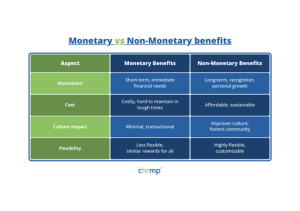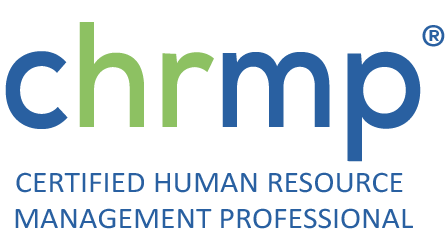In today’s competitive business environment, companies are constantly seeking innovative ways to motivate their employees. While monetary rewards are effective, non-monetary incentives can significantly enhance employee motivation and engagement without increasing the financial burden on the organization.
Thank you for reading this post, don't forget to subscribe!Implementing non-monetary incentives can significantly boost employee motivation and engagement without the need for financial expenditure. By recognizing and appreciating employees, providing career development opportunities, and fostering a positive work environment, companies can create a motivated and productive workforce. The key to effective non-monetary incentives lies in understanding what motivates your employees and tailoring your approach accordingly.
This blog will explore ten practical tips for maximizing non-monetary incentives to boost employee motivation and satisfaction.
Table of Contents
ToggleWhat Are Benefits or Incentives?
Benefits or incentives are rewards provided by employers to motivate and engage their employees. These can include both monetary rewards like bonuses and salary increases, and non-monetary incentives such as recognition programs, flexible work arrangements, and professional development opportunities. The goal of offering these benefits is to enhance employee motivation, improve job satisfaction, and increase retention rates. By balancing financial and non-financial rewards, companies can create a holistic approach to employee engagement, ensuring both immediate and long-term performance and loyalty.
What Are Non-Monetary Incentives?
Non-monetary incentives are rewards given to employees that do not involve direct financial compensation. These incentives aim to motivate and engage employees by fulfilling their psychological, social, and professional needs rather than their immediate financial desires. Understanding and effectively implementing non-monetary incentives can significantly enhance employee motivation, job satisfaction, and overall performance without directly impacting the company’s payroll expenses.

Comparative Analysis of Monetary vs. Non-Monetary Benefits
Understanding the different types of employee incentives is crucial for any organization aiming to optimize workforce performance and satisfaction. While monetary incentives, such as bonuses and salary increases, provide immediate financial rewards, non-monetary incentives offer a range of benefits that address employees’ psychological and professional needs.
Both forms of incentives play pivotal roles in shaping employee behavior, motivation, and overall job satisfaction. By examining the advantages and disadvantages of monetary versus non-monetary incentives, organizations can develop a balanced approach that leverages the strengths of both to foster a motivated, productive, and loyal workforce.
Motivation
- Monetary Benefits: Great for short-term motivation and addressing immediate financial needs, but may not sustain long-term engagement.
- Non-Monetary Benefits: Better for long-term motivation by addressing deeper needs like recognition and personal growth.
Cost
- Monetary Benefits: Can be costly and hard to maintain during tough economic times.
- Non-Monetary Benefits: Usually more affordable and sustainable, offering high returns through improved employee satisfaction and retention.
Impact on Culture
- Monetary Benefits: Might not significantly affect workplace culture if used alone. They are transactional and might not build a strong emotional connection.
- Non-Monetary Benefits: Can greatly improve workplace culture by fostering a sense of community and mutual support.
Flexibility
- Monetary Benefits: Less flexible, as everyone gets similar financial rewards.
- Non-Monetary Benefits: Highly flexible and can be customized to meet different employee needs and preferences.
Both cash and non-cash benefits are important in a complete employee compensation strategy. Monetary benefits are key for providing immediate rewards and attracting new hires, while non-monetary benefits are crucial for long-term engagement and creating a positive workplace culture.
What Are the Benefits of Non-Monetary Incentives?
Non-cash or non-monetary incentives offer several benefits that can significantly enhance employee motivation, engagement, and overall organizational performance. Here are some key advantages:
- Cost-Effective Motivation Non-monetary incentives can often be implemented at a lower cost than monetary rewards, making them a cost-effective way to motivate employees. For example, recognition programs or flexible work arrangements do not require significant financial investment but can yield substantial returns in terms of employee satisfaction and productivity.
- Enhanced Employee Engagement These incentives can foster a deeper emotional connection between employees and the organization. When employees feel appreciated and recognized, they are more likely to be engaged and committed to their work. This increased engagement can lead to higher productivity and better job performance.
- Improved Retention Rates Providing non-monetary rewards for employees can help reduce employee turnover by enhancing job satisfaction. Employees who feel valued and see opportunities for personal and professional growth are more likely to stay with the company, reducing the costs associated with recruiting and training new hires.
- Positive Workplace Culture Non-financial rewards to motivate employees can help build a positive workplace culture. Recognition programs, team-building activities, and opportunities for career development contribute to a supportive and collaborative environment. This positive culture can attract top talent and improve overall employee morale.
- Flexibility and Personalization Non-monetary incentives offer flexibility in how they are tailored to individual employees’ preferences and needs. For instance, some employees may value professional development opportunities, while others may appreciate flexible work hours. Customizing incentives to align with employees’ personal motivations can enhance their effectiveness.
- Encourages Intrinsic Motivation Monetary rewards often drive extrinsic motivation, where employees are motivated by the financial benefits. In contrast, non-monetary incentives can foster intrinsic motivation, where employees are motivated by internal factors such as personal growth, achievement, and recognition. This non-monetary motivation can lead to more sustained and meaningful engagement.
- Recognition and Appreciation Programs that recognize and appreciate employees’ contributions can significantly boost morale. Public acknowledgment of achievements can enhance employees’ self-esteem and create a sense of accomplishment, which can drive further performance improvements.
- Promotes Work-Life Balance Non-monetary perks for employees, such as flexible work arrangements and remote work options, help employees achieve a better work-life balance. This balance is crucial for mental and physical well-being, reducing stress and burnout, and leading to a healthier, more productive workforce.
- Encourages Skill Development Non-monetary rewards, such as training and development opportunities, encourage employees to enhance their skills and knowledge. This not only benefits the employees by advancing their careers but also helps the organization by building a more skilled and capable workforce.
- Boosts Creativity and Innovation By providing autonomy and empowering employees to make decisions, non-monetary incentives can foster a culture of creativity and innovation. Employees who feel trusted and valued are more likely to take initiative and contribute new ideas, driving the organization forward.
Implementing a mix of monetary and non-monetary incentives ensures a
comprehensive approach to employee motivation and engagement, enhancing both individual performance and overall organizational success.

What are the Top 10 Non-Monetary Benefits that Enhance Employee Engagement?
- Recognition and Appreciation
Recognizing and appreciating employees’ efforts is one of the most powerful non-monetary incentives. Regularly acknowledging employees’ achievements can boost their morale and productivity. Recognition can be formal or informal, private or public, and can come from peers or management.
- Example: Google’s “gThanks” program allows employees to publicly recognize each other’s contributions. This peer-to-peer recognition platform enhances the company’s culture of appreciation. Additionally, Google’s “Employee of the Month” awards spotlight exceptional contributions, fostering a sense of achievement and motivation.
- Career Development Opportunities
Offering opportunities for career growth and professional development can serve as a strong motivator. Employees value chances to enhance their skills and advance their careers. Providing access to training programs, workshops, and conferences shows a commitment to employee development.
- Example: IBM’s “Think Academy” offers a wide range of online courses, helping employees stay current with the latest technologies and business strategies. IBM also has a mentorship program where senior employees guide juniors, fostering a culture of continuous learning and growth.
- Flexible Work Arrangements
Flexible work schedules and remote work options can significantly improve work-life balance, leading to increased job satisfaction and motivation. Flexibility demonstrates trust in employees and acknowledges their need to balance personal and professional responsibilities.
- Example: Microsoft’s flexible work policy allows employees to choose their work hours and locations. During the COVID-19 pandemic, Microsoft extended its remote work policies indefinitely, recognizing the benefits of flexibility in maintaining employee well-being and productivity.
- Employee Empowerment
Empowering employees by involving them in decision-making processes can increase their sense of ownership and responsibility. When employees feel their opinions are valued, they are more likely to be engaged and motivated.
- Example: At Zappos, employees are encouraged to make decisions independently to improve customer service. This empowerment extends to creating unique solutions to customer problems, which enhances their sense of responsibility and satisfaction.
- Healthy Work Environment
Creating a healthy and positive work environment can enhance employees’ overall well-being and productivity. This includes physical wellness programs, mental health support, and fostering a positive workplace culture.
- Example: Salesforce provides comprehensive wellness programs, including on-site fitness centers, mental health support, and healthy food options. The company also has a robust “Wellness Reimbursement Program” that subsidizes gym memberships and fitness classes..
- Social Recognition Programs
Implementing social recognition programs where employees can acknowledge each other’s efforts can foster a supportive and collaborative culture. Peer recognition can be a powerful tool in building a cohesive team environment.
- Example: Adobe’s “Appreciation Week” is a dedicated time for employees to recognize their peers’ contributions through shout-outs and thank-you notes. The company’s internal platform allows for public acknowledgment, boosting morale and fostering a supportive culture.
- Challenging Work Assignments
Assigning challenging and meaningful tasks can keep employees engaged and motivated by allowing them to utilize their skills and creativity. When employees face stimulating challenges, they are more likely to be committed and driven.
- Example: Tesla encourages its engineers to work on innovative projects that push the boundaries of technology. By tackling ambitious goals, such as developing the next generation of electric vehicles, employees remain motivated and passionate about their work.
- Work Autonomy
Giving employees autonomy in how they perform their tasks can lead to higher job satisfaction and motivation. Autonomy allows employees to take ownership of their work, fostering a sense of trust and respect.
- Example: Atlassian’s “ShipIt Days” allow employees to work on any project of their choice for 24 hours. This freedom not only promotes creativity and innovation but also gives employees a sense of ownership and satisfaction in their work.
- Team-Building Activities
Organizing team-building activities can strengthen relationships among employees an
-
- Example: LinkedIn regularly organizes team-building retreats and activities such as escape rooms and outdoor adventures. These activities help build trust, improve communication, and enhance collaboration among team members.
- Example: LinkedIn regularly organizes team-building retreats and activities such as escape rooms and outdoor adventures. These activities help build trust, improve communication, and enhance collaboration among team members.
-
- d create a more cohesive work environment. These activities can range from casual social events to structured team
- -building exercises.
- Public Celebrations of Milestones
Celebrating company milestones and individual achievements publicly can boost morale and foster a sense of community. Public celebrations acknowledge the hard work and dedication of employees, reinforcing a culture of recognition.
- Example: HubSpot celebrates its employees’ work anniversaries and major project completions with company-wide announcements and celebrations. These events are often shared on social media, highlighting the achievements of employees and promoting a sense of pride and community.
By incorporating these strategies, HR professionals can leverage non-monetary incentives to create a motivated, engaged, and high-performing workforce. The examples provided illustrate the practical application of these tips in real-world scenarios, making the concepts more relatable and actionable for HR practitioners.
Gallup’s Insights on the Impact of Non-Monetary Benefits
Gallup, a renowned global analytics and advisory firm, has conducted extensive research on the impact of non-monetary benefits on employee engagement and performance. According to Gallup’s findings, non-cash incentives have the following impact:
- Increased Employee Engagement Gallup’s research highlights that no
- n-monetary incentives, such as recognition and opportunities for professional growth, significantly boost employee engagement. Employees who feel valued and recognized are more likely to be engaged and committed to their work.
- Enhanced Job Satisfaction Non-monetary rewards for employees contribute to higher levels of job satisfaction. When employees receive recognition and have opportunities for career development, they are more likely to be satisfied with their jobs and stay with the company longer.
- Better Performance and Productivity Employees who are
- engaged and satisfied tend to perform better and are more productive. Gallup found that organizations with high employee engagement experience 21% higher profitability, demonstrating the tangible benefits of non-monetary rewards on business outcomes.
- Improved Retention Rates Non-monetary benefits play a crucial role in retaining top talent. Employees who feel appreciated and see a clear path for career advancement are less likely to leave the organization. This reduces turnover rates and associated costs.
- Fulfilling Psychological Needs Gallup’s studies emphasize the importance of fulfilling employees’ psychological needs through non-financial rewards to mo
- tivate employees. Recognition, a sense of belonging, and opportunities for personal growth address these needs, leading to more motivated and loyal employees.
- Stronger Organizational Culture Offering non-monetary perks for employees helps build a positive organizational culture. A culture that values and recognizes employees’ contributions fosters a supportive and collaborative work environment, which is crucial for long-term success.
Gallup’s research underscores the significant impact of non-monet
ary benefits on employee engagement, satisfaction, performance, and retention. By implementing monetary
and non-monetary incentives such as recognition programs, career development opportunities, and a supportive work culture, organizations can enhance employee motivation and achieve better business outcomes. Balancing financial reward and non-financial reward strategies ensures a holistic approach to employee well-being and organizational success.
10 Real-Life Examples of Companies Offering Non-Monetary Incentives
Implementing non-monetary incentives can significantly enhance employee motivation and engagement. Let’s explore how companies like Google, Cisco, Salesforce, Apple, Netflix, Walmart, Patagonia, Delta Air Lines, LinkedIn, and Walt Disney leverage non-monetary rewards to benefit both their employees and their organizations.
- Incentives Offered:
- On-site wellness and fitness centers
- Healthy meals and nap pods
- Flexible work arrangements
- Professional development opportunities through Google Career Certificates
- Impact on the Company:
- High employee satisfaction and retention
- Increased engagement and productivity
- Maintained reputation as a top employer
- Impact on Employees:
- Enhanced work-life balance
- Access to continuous learning
- Reduced burnout and increased job satisfaction
Cisco
- Incentives Offered:
- Free access to mental health professionals through Vida Health
- Up to 10 free in-person counseling sessions for employees and their families
- Financial counseling, college admissions coaching, and MetLife Prepaid Legal services
- Unlimited personalized caregiving support
- Impact on the Company:
- Rated one of the top 100 companies to work for in 2021 by Fortune
- Impact on Employees:
- Enhanced well-being and reduced stress due to comprehensive support programs
- Improved work-life balance and personal financial management
Salesforce
- Incentives Offered:
- Recognition programs like “Trailblazer Awards”
- Career development opportunities through the “Trailhead” platform
- Impact on the Company:
- Strong culture of recognition and learning
- High employee engagement and loyalty
- Improved customer service and business performance
- Impact on Employees:
- Feeling valued and motivated
- Empowered to advance skills and careers
- Higher job satisfaction and professional growth
Apple
- Incentives Offered:
- Discounted healthcare and insurance policies
- Generous employee discounts on Apple products and additional stock options
- Extended maternity leave, tuition reimbursement, and subsidized student loan refinancing
- Lucrative donation matching program
- Impact on the Company:
- Rated as one of the top 100 companies to work for by Glassdoor
- Increased retention rate by 28% over the past two years
- Impact on Employees:
- Higher job satisfaction due to extensive non-financial rewards
- Improved retention and reduced turnover
Netflix
- Incentives Offered:
- Unlimited vacation days
- Flexible work schedules
- Focus on results rather than hours worked
- Impact on the Company:
- Attracts top talent
- High-performance culture
- Boosted productivity and innovation
- Impact on Employees:
- Significant autonomy and work-life balance
- Reduced stress and increased well-being
- Fosters trust and loyalty towards the company
Walmart
- Incentives Offered:
- Full medical coverage with health reimbursement and savings accounts
- Extended maternity leave with 16 weeks of paid time off
- Free emotional well-being resources via Thrive Global
- 100% tuition and book fee coverage for employees’ college education
- Impact on the Company:
- Consistently receives above-average employee reviews
- Impact on Employees:
- Access to quality healthcare and education opportunities
- Enhanced emotional well-being and personal development
Patagonia
- Incentives Offered:
- Paid time off for volunteering
- Flexible work hours and on-site childcare
- Support for environmental activism
- Impact on the Company:
- Strengthened brand identity
- Increased employee loyalty and engagement
- Attracts passionate employees
- Impact on Employees:
- Strong sense of purpose and mission alignment
- Higher job satisfaction and morale
- Contribution to societal and environmental goals
Delta Air Lines
- Incentives Offered:
- Two free global travel passes for employees
- Highly rated professional development and mentoring programs
- Extended paid leave benefits and comprehensive life insurance
- Impact on the Company:
- Employee retention rate is in the top 10% compared to similar-sized companies
- Impact on Employees:
- Increased job satisfaction and loyalty
- Professional growth through development programs
- Incentives Offered:
- Tuition reimbursement for further education
- Free access to LinkedIn Learning courses
- Impact on the Company:
- Cultivates a highly skilled workforce
- Enhanced innovation and competitiveness
- Maintained industry leadership
- Impact on Employees:
- Continuous learning and development opportunities
- Reduced financial burden of education
- Increased job satisfaction and career advancement
Walt Disney Company
- Incentives Offered:
- Complimentary theme park admission and exclusive discounts
- VoluntEARS Grants program for skill-based community volunteering
- Career development opportunities, wellness programs, and childcare
- Extensive paid time off, tuition reimbursement, and commuter assistance
- Impact on the Company:
- Rated fourth by Fortune as one of the world’s most admired companies
- Impact on Employees:
- Personal and professional growth through comprehensive rewards packages
- Increased motivation and satisfaction due to recognition and support programs
These examples demonstrate that non-monetary incentives and non-financial rewards can greatly enhance employee engagement, satisfaction, and retention. These non-monetary rewards for employees, including wellness programs, education opportunities, creative freedom, travel benefits, and family-friendly policies, have a profound impact on both the employees and the organizations.
Implementing similar strategies can lead to better business outcomes and a more dedicated workforce.
Conclusion
Non-monetary incentives play a crucial role in fostering a motivated and engaged workforce. By offering non-monetary incentives such as professional development opportunities, flexible work arrangements, and comprehensive wellness programs, companies can significantly enhance employee satisfaction and retention. The success stories of industry leaders like Google, Salesforce, Netflix, Patagonia, and LinkedIn demonstrate the powerful impact of non-monetary rewards for employees. These non-financial rewards to motivate employees not only contribute to a positive workplace culture but also drive better business outcomes by boosting productivity and innovation.
Implementing a strategic mix of monetary and non-monetary incentives is essential for organizations aiming to achieve long-term success. By understanding and leveraging the various types of non-financial incentives, businesses can create a supportive environment that addresses the holistic needs of their employees, ensuring sustained motivation and loyalty. Ultimately, the integration of financial reward and non-financial reward systems will enable companies to maintain a competitive edge while nurturing a dedicated and high-performing workforce.
Free Downloads
Ready to create a more adaptable and supportive workplace? Download your free Flexible Working Arrangement Policy now and discover how integrating such policies can help your organization harness the full potential of non-monetary incentives, fostering a motivated and loyal workforce.






